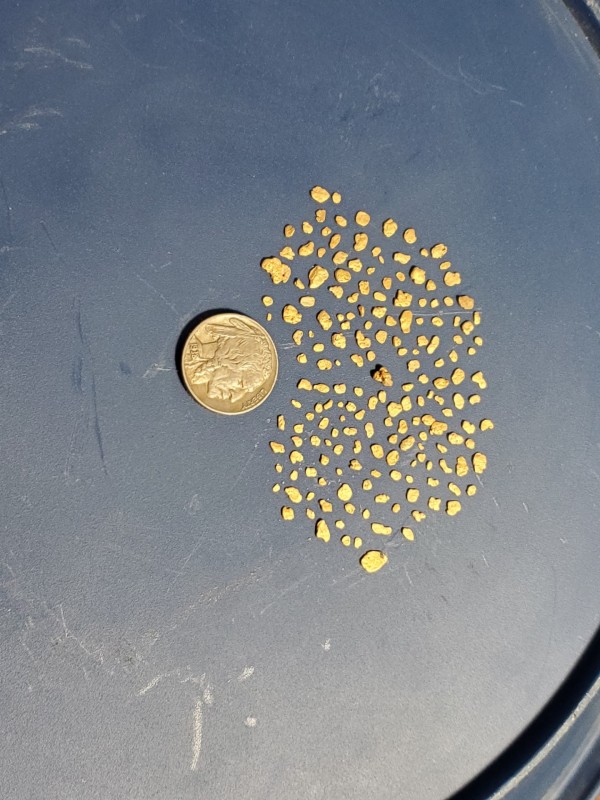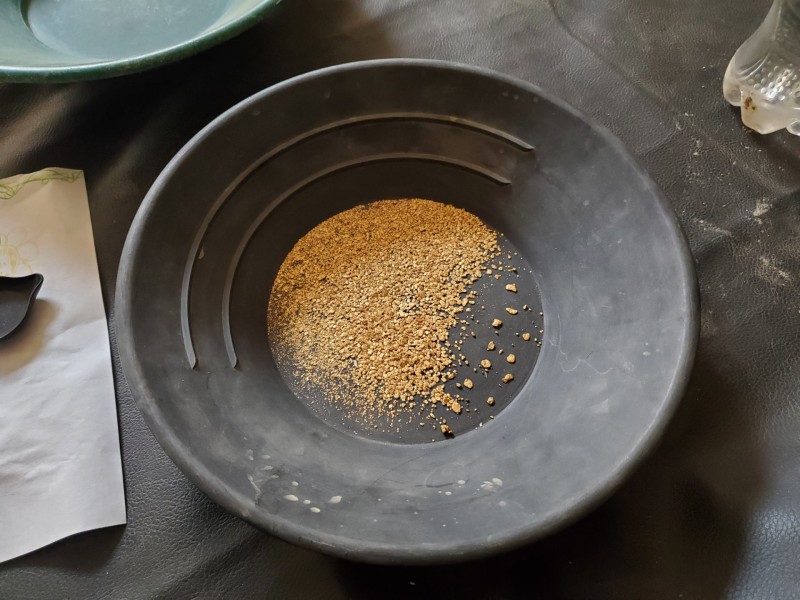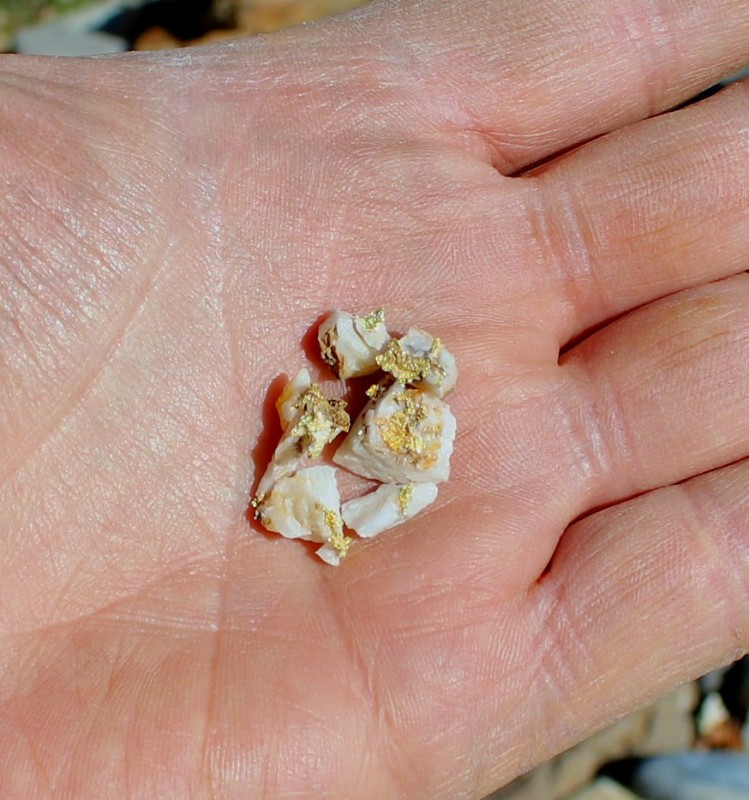-
Posts
883 -
Joined
-
Last visited
-
Days Won
35
Content Type
Forums
Detector Prospector Home
Detector Database
Downloads
Everything posted by Reno Chris
-

We Lost John Blennart Of Tucson
Reno Chris replied to Reno Chris's topic in Detector Prospector Forum
As noted, John had a great sense of humor and would kid people with no mercy. But he had a thick hide and you could kid him back just as much and he would laugh. He had a lot of adventures, including spending a month under house arrest in Oman. He had permission to hunt meteorites there from the authorities, but apparently not from everyone who might object. He had to buy his way out - in countries like that you can purchase your freedom if you have the money. He hunted gold in Australia, and of course all over Arizona. He had found pounds of gold in Arizona and spent a lot of time detecting there. John loaned some of his gold to Arizona museums to display. This is a tiny, tiny part of the gold he found. -
A lot of the Arizona prospectors and other western Prospectors will remember John "Goldmaster" Blennart, AKA "John B.". He passed away last Monday the 11th. I lost another old prospecting friend about a week ago. Enjoy the time you have as none of us are here forever.
-

Detecting Last Weekend - More Gold
Reno Chris replied to Reno Chris's topic in Detector Prospector Forum
Its an old channel and shoreline area that has weathered and much of the overlying gravel washed away. The general area is where some of the old tertiary channels emptied out into the basin lakes of the central valley in CA. -

Detecting Last Weekend - More Gold
Reno Chris replied to Reno Chris's topic in Detector Prospector Forum
It just depends on the location. There is very little exposed bedrock at this location and what bedrock there is consists of very well weathered rock. There is no hard,outcropping bedrock as with many streams. I have found gold in the old workings that they just missed as well as along the workings but just outside them and in some place where there are no workings within a couple hundred feet. They tested this are and planned where they would work by panning samples of gravel. -
I was out again in the same environment and same general area last weekend. The weather was beautiful - and it can be hot this time of year in the lower elevation country, but it was not hot last weekend. There was scattered gold here and there in and around the old workings of the miners. I dug a number of loud, non-ferrous targets, but they were all lead - got over 2 ounces of lead. I got 6.7 grams of gold in 17 pieces. All were dug with the GM 1000 and wireless headphones from Fossickers. The wireless headphones are nice, I should use them more often.
-
I dug both types. Targets that flash both ways are the detector telling you "I dont know" - so you must dig them as they are sometimes gold.
-
Went out a few weeks ago to prospect in California at the same location I was at a few weeks back. Did pretty well with the GM 1000 - its a pretty trashy area and if you dont want to dig 200 pieces of rusty iron junk, you will be using some discrimination. I did try the SDC and the 7000 in a few areas, but eventually the trash got to me and I was back on the GM1000. I know that a lot of guy preach dig it all, but there are places which have gold but the amount of trash will make your head spin. What do you guys think? This is the gold I dug last time - 5 grams. I'll be returning soon because success breeds more success.
-
They are 12 mm outside diameter, which seems to be an unusual size. California side of the Sierra Nevada in the low foothills. The guy I went with has tent camped there at that same spot a number of times with no problem. However there were maybe 35 cows - not just one or two. Yes, getting out was good for mind and body, I have a feel for the area now and I'm looking to return and give it another go. This time I'll be putting up an impromptu tarp tent in the back of my pickup.
-
I freely admit a bear attack would be far, far worse than a cow attack. I'll be out there again in the coming weeks. This time I'll be prepared for the attack cows. I'll also be trying some different things with my detectors to find gold. When I get the results, I'll post some photos here.
-
They urinated on the tarp, but a plastic tarp is easily cleaned. They wrecked the tent while I was off detecting a few miles away. It was a great trip and I'll be back.
-
With a bad auto accident in spring and all the fires later, 2021 was not a banner year for me to get out and search for nuggets. So I started a bit early this year with a invite from a friend to the low country in the far western edges of the Sierra Nevada. It was a great trip with excellent weather in the mid-70s. I got some good gold but my tent was attacked and stomped on by cows! I think these were attack cows, specially bred by the military for stealth counter-terrorism. 😉 Or something like that.....🤣 The tent is repairable though I needed to buy a new section of tent pole and give the tent a through washing. The photo below shows the gold, 7.4 grams, just a bit shy of a quarter ounce. The largest piece, at 3.5 grams was a partial sunbaker - partly covered but some of it was showing. It was good to get out and find some gold.
-

Back From Alaska, A Different Version
Reno Chris replied to Reno Chris's topic in Detector Prospector Forum
It was warm and mostly pretty dry while we were there but it is changing fast now. The days are getting shorter, the weather getting cooler and wetter. -
Knowing how to find gold is like a trade skill. A metal detector is only a tool. You as the prospector find the gold. Just owning a metal detector does not make one a knowledgeable prospector any more than owning a voltmeter makes one a journeyman electrician. The electrician's knowledge makes him an electrician, not his tools. Some guys with years of experience do make some extra money with their detectors, but its more of an adventure than a practical and reliable way to make money. Amounts made are all over the map. I have days where I make $500 to $1,000 and plenty of days where I make less than $5. Its so erratic that it is hard to average. For a new guy with no prospecting experience, unless you are really lucky, I'd expect you to average $0 until you learn the trade skills of prospecting and finding gold. Sorry if that sounds harsh, but its an honest answer.
-
I also am back from Alaska, although its from a different part of the state than Steve was in. I am back from Gold King Creek, about 50 miles south of Fairbanks. It was quite an adventure. They run an operation for tourists as well as running a regular commercial scale operation at the same time. I did metal detecting and shoveled gravel into a highbanker. Shoveling gravel is taxing and with my back still only at about 90% from my car accident, after a couple weeks of shoveling all day my back was in sore shape. I balanced off shoveling by metal detecting. I found 179 pieces of gold while I was there, but the total weight for all my detected gold was only 5.2 grams. The gold from Gold King is small (as is common for many Alaska placers). Now don't get me wrong, I had a ball detecting all of those 179 pieces, and there are a few rare larger bits in the area. One lady found a nugget of about 3.5 grams before we arrived with an SDC 2300 - very unusual. I think the biggest the commercial operator got while I was there was about a gram, and that is from 65 ounces he produced in the two weeks I was there. My biggest was about 0.2 grams, and average for the 179 pieces was about 0.03 grams. That's a testimony to the sensitivity of the GM 1000. I did get some good gold by shoveling into the highbanker also. The gold does not occur on a real bedrock but on a hardpan of deep clay, real bed rock is 180 feet down and likely has no significant gold ( based on where the gold is coming from). Overall, I think it was a big success, I really enjoyed myself, the folks who went in with me had a great time, and I got to meet a lot of new folks, including some of the staff who were avid detector prospectors from Arizona. On trying to depart, I got stuck there for a day by low fog - which prevents planes from flying in. Very normal for an Alaskan prospecting adventure. I've now taken care of the things I need to do for the ICMJ magazine and am getting back on track to take care of all the other things that go with life here in the lower 48. There will be an article in the ICMJ on it with a lot more detail for those who subscribe, and I have a video about working on hardpan or false bedrock on my Youtube channel.
-

Couple ? Regarding Black Sand And Gold
Reno Chris replied to Allen M's topic in Detector Prospector Forum
Iron is the 4th most common mineral in the earth's crust, with many rocks containing significant amounts of iron minerals. Both igneous ( includes both volcanic rocks and crystalline rocks like granite) as well as metamorphic rocks (rocks changed by heat and pressure) commonly have significant iron and it often crystalizes out into tiny dark colored specks that are heavier and more durable than other rock forming minerals like feldspar and mica. The iron rich mineral specs are what make up black sand. Rocks that dont have much iron - like limestone or dolomite - are only rarely hosts that give rise to placer gold. So iron and iron rich minerals are super common, while gold is super rare (gold is one of the rarer elements in the earth's crust). A lot of iron oxides in quartz veins are the remains of what was once iron pyrite, but the sulfur is gone and only iron oxides remain. As far as rocks which show "gold" on the GM 1000, that merely means that there is something conductive there and it does not have the magnetic properties of iron minerals. It could be gold but it could be other things too. There are some conductive minerals - not many but a few. -

The General Public's Rights To Cross Mining Claims
Reno Chris replied to oldmancoyote1's topic in Detector Prospector Forum
Effectively the only case where the public can be excluded from access is cases of permitted mining operations where the public could be in danger and in those cases fencing and signage are both approved by the BLM and required under MSHA. -

Thoughts On Accurate Pinpointing
Reno Chris replied to Reno Chris's topic in Detector Prospector Forum
Agreed and some of those techniques work well or not so hot depending also on the size of the target. Edge on methods work well if the target is good sized, and can be almost required if the target is huge. They do not work well if the target is really small. Small targets may not sound off on edge until the are almost touching the edge of the coil. With a DD I typically step back and move forward rather than moving the coil backwards towards my feet but the net result is exactly the same. Fast target pinpointing and recovery is more of an advanced technique and exact methods depend on size of the target, size of the coil, configuration of the coil and likely approximate depth to the target. But it is something well worth the effort. -
I had posted in another thread about how many prospectors do not take the time to accurately pinpoint and therefore spend a lot of unnecessary time chasing their target, resulting in less gold found. I thought it might be better to have a clean thread specifically on the topic. Its important because taking an extra 30 seconds to pinpoint a target carefully can save 5 minutes or more of digging and chasing. Multiply 5 minutes per target (more or less) by 20 or more targets a day and it really adds up. Plus the less time you spend digging and chasing your targets, the more time you spend actually searching for gold. This means you will be able to detect and find more targets in a day resulting in more gold produced. Geof_junk had suggested a method described by Garrett to make a 90 degree X It works, but even that is very rough. People swing over a target from one direction, then swing over it from another direction and where both lines that indicate the target cross, that is where the target is.... Sort of. The Garrett description says to use the line where the target is loudest, but often a target is pretty much the same intensity over the whole body of the coil. And a lot of prospectors just use the lines for anywhere the coil sounds, but depending on the size of your target, whether the target is sounding on the front edge or the back edge, or anywhere in between, your "imaginary line" can be almost twice the width of the coil. Then cross that with an "imaginary line" at 90 to the first one, you now have a circle roughly twice the diameter of the coil in which the target could be located. The smaller the coil, the smaller the circle of possibility - so pinpointing with a small coil is just naturally easier. On the other hand, if you are swinging the GPX with a standard coil, that circle is up to 28 inches, and because you need to swing the coil through the hole over the target, now you need a hole of about 42 inches and if its deep, that is going to be a real crater! This is why its important to step back of the target and swing forward to make sure you are hearing it on the front of the coil. Move the coil slowly forward as you swing it and where you first get a full target response, mark that line. Turn 90 degrees and do the same. That crossing should get you a more accurate pinpoint of the target location, allowing you to dig and recover the target more quickly. Any other thoughts about pinpointing?
-
Our eyes are easily fooled! That is why its hard to guess the weight of nuggets. As you say on the video, it is like foil - big in 2 dimensions, but thin in the third dimension. I have a piece of gold from Northern Nevada that is a flat folded piece like that, but mine is about 1/10th the size - a bit over 3 grams. Just like that one, you'd expect it to weigh more based on how it looks. Even on pieces with good size in 3 dimensions, gold weight can be tough to guess. I have a spot in California which has produced a good number of 1/4 to 1/2 ounce nuggets in chunky pieces, but look like they should weigh about twice as much based on what you would guess by looking at them. On close inspection with magnification there are little bits of quartz and iron oxides shot throughout the piece, which is why they weigh less than you would expect - they are not truly solid gold, even though they look like it in your hand.
-
Oneguy - as far as saving time digging targets, one of the biggest problems is that many people simply do not make much effort to accurately pinpoint the target location. They swing over it a couple times to make sure there is a target in the ground and then immediately start digging. Then they chase the target all around trying to find it and it seems like its here and then it seems like its over there. The hole gets bigger and bigger, time drags on and the prospector gets frustrated. Taking an extra 30 seconds to pinpoint a target carefully can save 5 minutes or more of digging and chasing. Multiply 5 minutes per target (more or less) by 20 or more targets a day and it really adds up. Plus the less time you spend digging and chasing your targets, the more time you spend actually searching for gold. This means you will be able to detect and find more targets in a day resulting in more gold produced.
-
If it is sitting so that the sunlight touches it, its a sunbaker, whether you see it first or the detector sees it first. I've found underwater nuggets that were exposed to sunlight, and I'd also call them sunbakers, even though they were underwater.
-

Best Detector For The Worst Case Scenario
Reno Chris replied to RONS DETECTORS MINELAB's topic in Detector Prospector Forum
Discrimination for pulse detectors is a last ditch type of thing and I would advise against it. On my first trip to Alaska I watched as several multi-ounce nuggets that had been found in the days I was there tested on a Minelab PI and discriminated as junk. Only very loud targets, that you have carefully pinpointed their location can be safely discriminated even with a VLF. You are right that serpentine is a very difficult bedrock to work with a VLF - dang near impossible. Serpentine can at times even be difficult with a pulse detector. The frequency of a detector does change the sensitivity of a VLF detector to hot ground, but only a little. Turning down the gain helps too but only to a certain point. That is why on really difficult ground like serpentine bedrock, a pulse detector is best. One of the things about successful nugget detecting is that with only a few exceptions, you need to accept that you will dig a lot of trash. -
Detectors are tools, and in the same way you dont want a crescent wrench to tighten a Phillips head screw, if you are tightening a bolt you dont want a screwdriver. VLFs are better choices for hard rock mine dumps, no question about it. On the other hand if I am detecting highly mineralized ground with deep gold, I am going to want a PI or the GPZ. No matter the work, you want to be using the right tool for the job. Here is some Nevada hard rock gold I detected with a VLF...
-

Fists Full Of Gold By Chris Ralph
Reno Chris replied to Steve Herschbach's topic in Detector Prospector Forum
Can you get the book printed in Australia? You do have the best book out there hands down. As per my comment from a couple hours ago just above your post: I had a small run printed there but the cost of printing small runs and delivering it to JP makes the book almost as expensive there as it would be to ship my copies over there. I barely did better than to break even. I only am able to make a decent profit on the book here in the US by printing several thousand copies at a time. And before anyone suggests print on demand, no, it is not any cheaper, it is more expensive. -
I was doing some work in really hard to dig ground and deep gold. I was using the GPZ to see the deep targets and even with the standard coil you need to dig a big hole with the 7000. So I just dug a little starter hole to mark the spot. No paint left behind, no marker chips or flagging. Just the start of a hole dug to mark the spot. Afterwards, I'd go mack with the SDC and and dig it out - and with the smaller mono coil of the SDC, a much smaller hole needed to be dug. And I got some nuggets way too deep to see with the SDC by itself. I hate digging those GPZ craters , especially on deep targets - but I do like the deep gold! Its the lazy man's way -


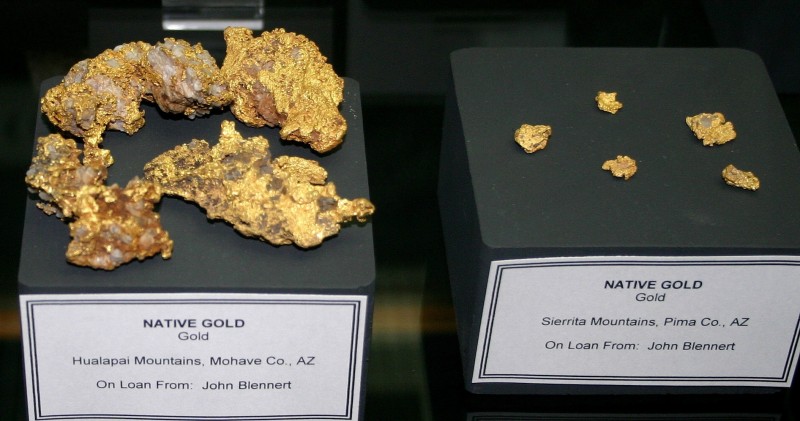

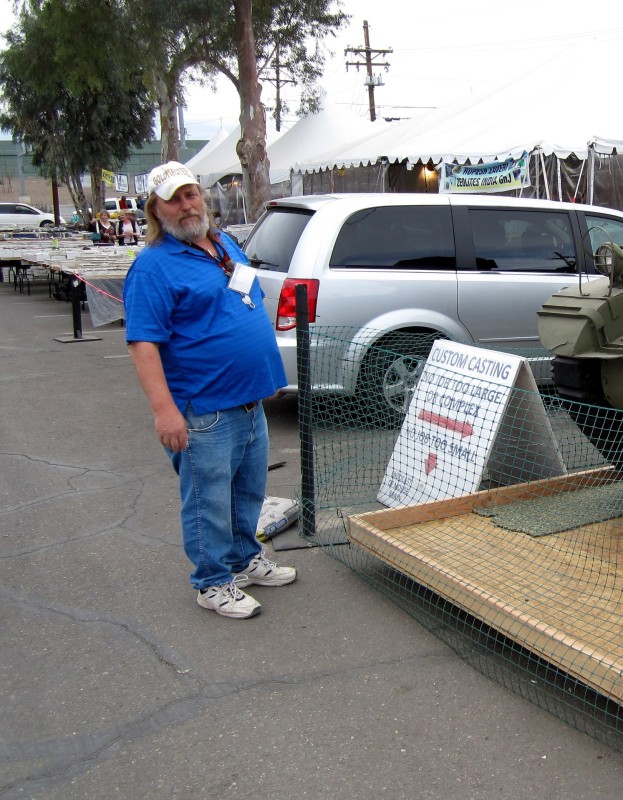



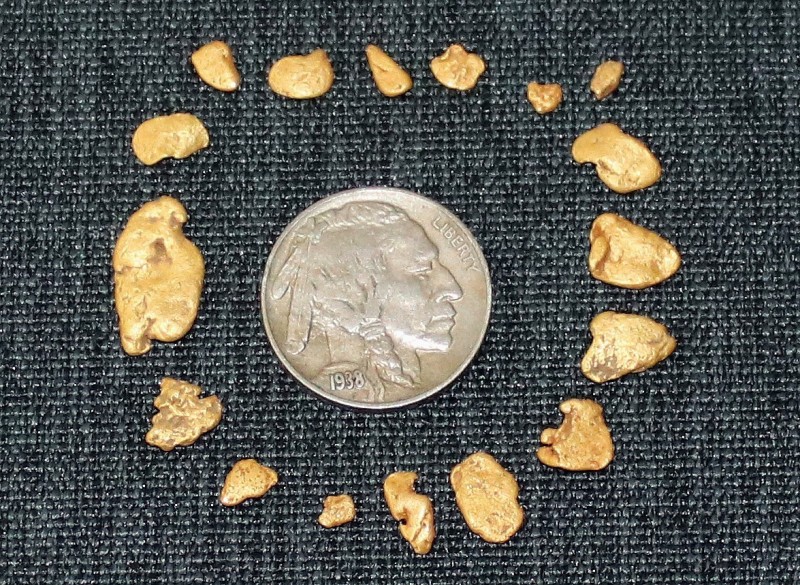
.thumb.jpg.00e0a9c99ba5dfe2614bec13cae2bf0e.jpg)
.thumb.jpg.de3b425bd977341c63e414d24521d0ac.jpg)
.thumb.jpg.dd9947b7c066c0dbfa2a8e1073c9ca0d.jpg)
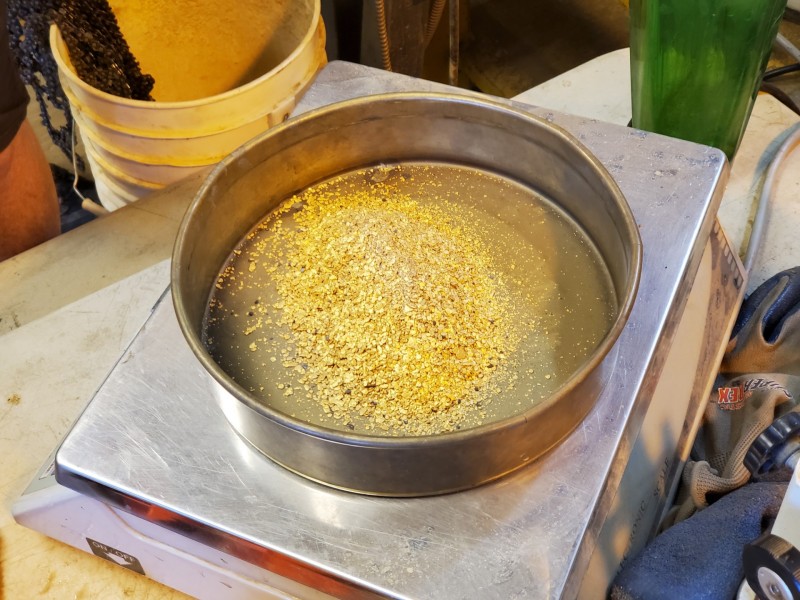
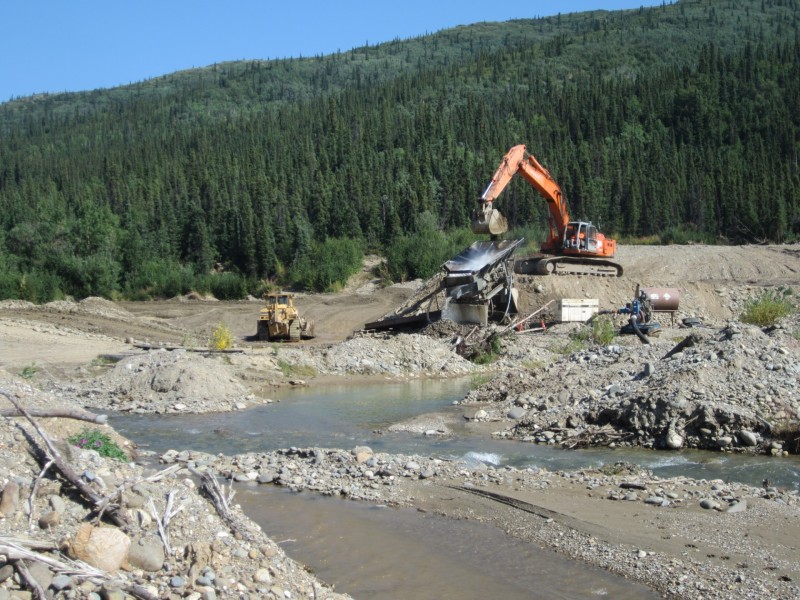
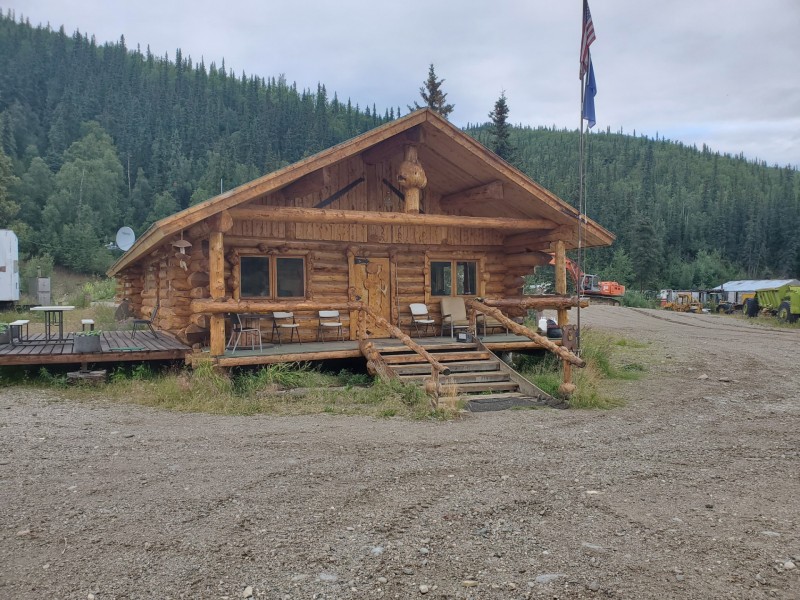
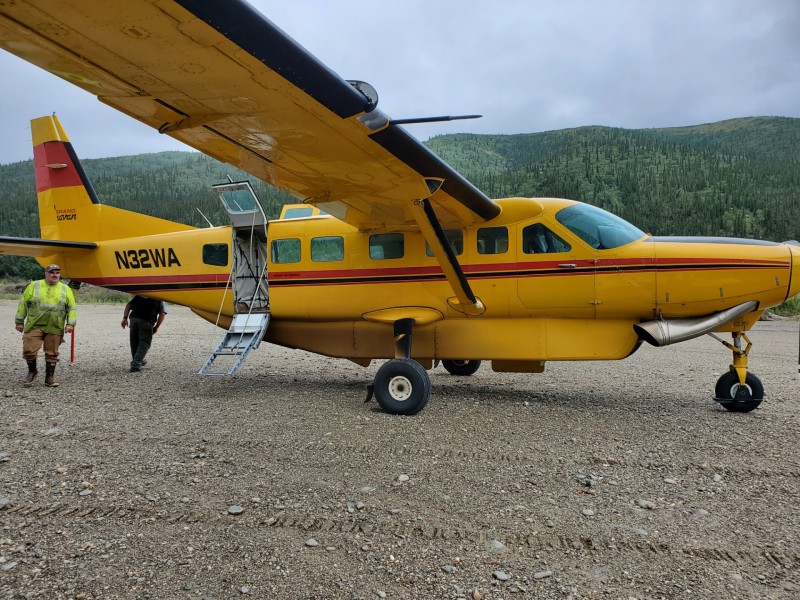
.thumb.jpg.d10cd67eacc79ca24e89489bce2ece45.jpg)
